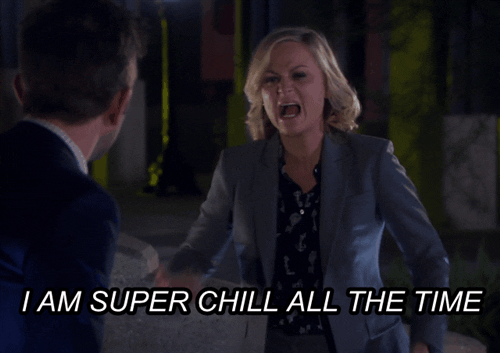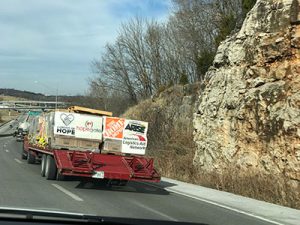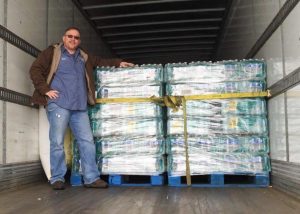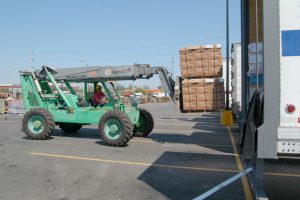I like to think of myself as a fairly peaceful person. But over the past few years, I’ve begun doing something that clearly stresses some people out.
The people in question are playing ALAN’s Disaster Simulation Game. And the triggering thing I do is… enable them to play it. At least that’s what I’ve repeatedly been told during post-simulation debriefing sessions, when the one expression that has come up more than any other is some variation of, “I was really stressed.”
So what, exactly, makes ALAN’s disaster simulation such a pressure cooker? More important, why do so many people continue to recommend it to their colleagues in spite of this – or ask us to come and stage it at one of their events? (And why should you do the same?)
Shall We Play A Game? The Basic Ground Rules
Well, let’s take a walk through a typical session to find out.
As the ALAN simulation begins, we assign each participant a distinct role that’s common to disaster relief. Some become government officials, while others become non-profit executives, business people or simply private citizens.
We also provide players with:
- Details about the game’s overall objective
- Resources and money to help meet the objective
- Extra information about any unique priorities or perspectives their particular characters might have (for example, a government official might need to consider getting re-elected, while a non-profit executive might need to keep donors happy while also trying to serve affected communities)
- Access to a special website to help manage their game play
- And a little bit of time to socialize with players who have either been assigned similar roles or who occupy the same geography.
Once these preliminaries are complete, we set everyone loose on a mock disaster and give them 18 minutes to try to get goods delivered to a fictional shelter that has been set up to help serve disaster survivors. Along the way, alliances are formed, sales are made, hoarding occurs, non-profits attract some but not all of the donations they need, and elected officials seem to have some but not all of the information that’s necessary.
In other words, it’s a lot like real life, where problems like information asymmetry, coordination challenges, missing relationships, and competing agendas often complicate the process of getting people the help they need. (Hence the need for an organization like ALAN!)
So Who Wins?
Let’s also look at the players themselves, because much like certain board or video games, our simulation has been known to bring out the cut-throat competitor in some otherwise very nice people.
While there are some participants who keep their eye on the real prize (also known as “delivering help”) and who correctly believe that there are ample resources as long as everyone shares, there are many others who tend to view the exercise as a zero sum game that will have clear winners and losers. The people in this latter group usually believe that there aren’t enough resources to go around. Just as important, they view the resources they have in their banks as their exclusive property.
When Group B is the dominant one, it ultimately creates a more dog-eat-dog atmosphere, as well as a poorer individual performance – just like it does during a real disaster. And that’s not terribly enjoyable.
Game On!
Finally, let’s examine why the Disaster Simulation Game was developed in the first place.
It wasn’t because ALAN thought people could occasionally use a fun alternative to attending speeches or panel discussions at industry events. (Although the simulation actually can be pretty fun.)
And it wasn’t because those of us who work in disaster relief wanted people to feel what it was like to walk a mile in our shoes.
Instead, it was because we knew that disasters are stressful situations. We also knew that – per extensive research that has been done on stress resilience – people’s judgment is frequently compromised when they’re under stress. And that’s a huge problem, because events like hurricanes, tornadoes and pandemics require a lot of people to make a lot of major judgment calls, including many that can’t wait until things calm down.
In light of that, ALAN’s challenge was clear: We needed to find a way to teach organizations how to hit the “just breathe” button instead of the panic button during crises.
And thanks to the aforementioned research, we knew exactly how to do that, because several of these studies recommend putting people into simulations that replicate the stress conditions they’ll experience.
The Ultimate Challenge
So that’s the rationale behind the creation of our game – and the value proposition for playing it.
Does our game take people out of their comfort zone and challenge their perspective? Absolutely. And is the outcome always pretty? Absolutely not. (Then again, neither are disasters!)
Even so, attending a session is always worth it, because when people play, they:
- Have an opportunity to examine how well they react to disastrous situations – all in a safe environment with no real consequences
- Learn that the core disaster-related problems they have as business leaders, government officials, non-profit executives or general citizens are essentially the same problems that every individual in every other sector has
- Gain an understanding of the problem-solving resources that are available outside of their silos – and discover the value of sharing their resources and knowledge rather than trying to operate in a vacuum
- And get to practice their collaboration skills with other professionals, so that when a real crisis hits, they’ll be more comfortable trusting and working along “outsiders.”
Like our Supply Chain Information Center, it’s another tool we offer in order to get as many members of our industry as disaster-ready as possible – and to help everyone build stronger disaster-response muscles like communication, collaboration and perhaps most important of all, empathy and trust. So that all of us can make better decisions for our communities. And more disaster survivors can get the help and hope they need.
When that happens, everybody wins.
So who’s ready to play?
Kathy Fulton
Executive Director
American Logistics Aid Network





